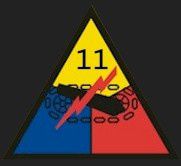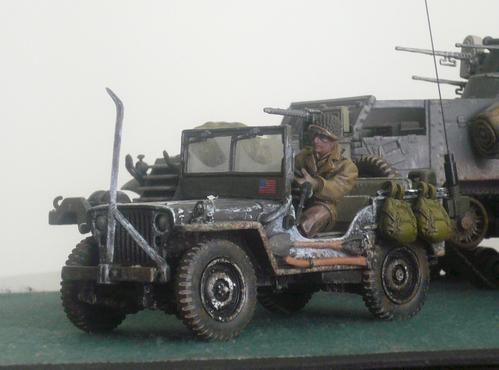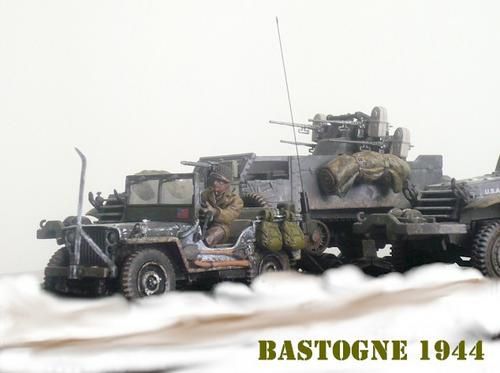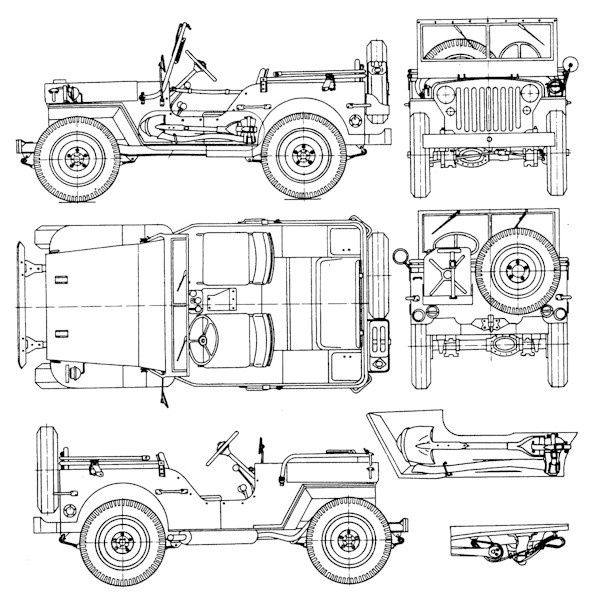






![]()

Jeep Willys
Even though the world had seen wide-spread mechanisation of the military during World War I, and the US Army had already used 4x4 trucks in it, supplied by the Four Wheel Drive Auto Co. (FWD), by the time World War II was dawning, the United States Department of War were still seeking a standardized light cross-country and reconnaissance vehicle.
As tensions were heightening around the world in the late Thirties, the US Army put the word out to American automobile manufacturers to come up with suggestions to replace its existing, aging light motor vehicles, mostly motorcycles and sidecars but also some Ford Model T's.[1][2] This resulted in several prototypes being presented to army officials, like five Marmon-Herrington 4x4 Fords in 1937, and three Austin roadsters by American Bantam in 1938 (Fowler, 1993). However, the US Army's requirements were not formalised until July 11, 1940, when 135 U.S. automotive manufacturers were approached to submit a design conforming to their specifications, for a vehicle the World War II training manual TM 9-803 described as "... a general purpose, personnel, or cargo carrier especially adaptable for reconnaissance or command, and designated as 1/4-ton 4x4 Truck."
Only three companies entered: American Bantam Car Company, Ford Motor Company and Willys-Overland Motors. Though Willys-Overland were the low bidder, Bantam received the bid, being the only company committing to deliver a pilot model in 49 days and production examples in 75. Under the leadership of designer Karl Probst, Bantam built their first prototype, dubbed the Blitz Buggy (and in retrospect "Old Number One"), and delivered it to the Army vehicle test center at Camp Holabird, Maryland on September 23, 1940. This presented Army officials with the first of what would eventually evolve into the World War II US Army Jeeps: the Willys MB and Ford GPW.
Since Bantam did not have the production capacity or fiscal stability to deliver on the scale needed by the War Department, the two losing bidders, Ford and Willys, were encouraged to complete their own pilot models for testing.
The contract for the new reconnaissance car was to be determined by trials. As testing of the Bantam prototype took place from September 27 to October 16, Ford and Willys technical representatives present at Holabird were given ample opportunity to study the vehicle's performance. Moreover, in order to expedite production, the War Department forwarded the Bantam blueprints to Ford and Willys, claiming the government owned the design.
Bantam did not dispute due to its precarious financial situation. By November 1940 Ford and Willys each submitted prototypes to compete with the Bantam in the Army's trials. The pilot models, the Willys Quad and the Ford Pygmy, turned out very similar to each other and were joined in testing by Bantam's entry, now evolved into a Mark II called the BRC 60. By then the US and its armed forces were already under such pressure, all three cars were declared acceptable and orders for 1500 units per company were given, for field testing. At this time it was acknowledged the original weight limit (which Bantam had ignored) was unrealistic, and it was raised to 2160 lb (980 kg).
For these respective pre-production runs, each vehicle received revisions and a new name. Bantam's became the BRC 40, and ceased motor vehicle production after the last one was built in December of 1941. After losing 240 lb, Willys' changed the designation to "MA" for "Military" model "A". The Fords went into production as "GP", with "G" for a "Government" type contract and "P" commonly used by Ford to designate any passenger car with a wheelbase of 80 inches.
By October 1941, it became apparent Willys-Overland could not keep up with production demand and Ford was contracted to produce them as well. The Ford car was then designated GPW, with the "W" referring to the "Willys" licensed design. During World War II, Willys produced 363,000 Jeeps and Ford some 280,000. Approximately 51,000 were exported to Russia under the Lend-Lease program.
A further 13,000 (roughly) amphibian jeeps were built by Ford under the name GPA (nicknamed 'Seep' for Sea Jeep). Inspired by the larger DUKW, the vehicle was produced too quickly and proved to be too heavy, too unwieldy, and of insufficient freeboard. In spite of participating successfully in the Sicily landings (September 1943) most GPAs were routed to Russia under the Lend-Lease program. The Russians were sufficiently pleased with its ability to cross rivers to develop their own version of it after the war.
![]()

![]()
| THE STORY OF THE |  |
THE accomplishments of the 11th Armored Division are told briefly in this little booklet. Its simple statements of fact will recall to you men of the Division the glorious accomplishments of your particular units.
You tankers remember the horror of the days of Bastogne and the burning and exploding hulls of your comrades' tanks.
You infantrymen remember your friends who caught it from a bunker in the Siegfried Line, so that you might go on. And you artillerymen know with what courage your buddies lent the support of their weapons to the attack.
You hard-working men of the supply services who forced trucks through icy, traffic-laden roads of the Ardennes, all the way into tank-convoyed lanes in "Indian Country," remember those who paved the way with their lives so that the road could be opened. The Division dedicates this booklet to those whose lives were lost in keeping the Thunderbolt running.
H. E. Dager
Major General, U.S. Army, Commanding





.

![]()
Battle of the Bulge
Bastogne General McAuliffe says "Nuts"
![]()
|
|





















/idata%2F0396584%2FKOREA%2F71910_korea_MIA1_800.JPG)
/idata%2F0396584%2FU.S.ARMY-POST-WW2%2Fphot4901a.jpg)
/idata%2F0396584%2FDRAWINGS-UNIFORMS-WW2%2F30-451-09b-2.jpg)
/idata%2F0396584%2FP-40%2F44FS000.jpg)
/idata%2F0396584%2FGERMAN-U-BOAT%2FBundesarchiv_Bild_101II-MW-1031-28-_Lorient-_U-31.jpg)
/idata%2F0396584%2FSOVIET-ARMY-WW2%2F1.jpg)




